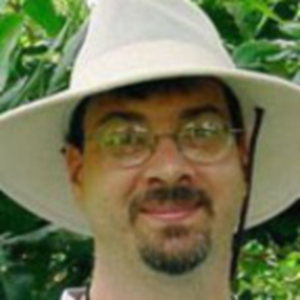Associate Professor
Ph.D., University of Georgia, 1995
 516A Bartram Hall
516A Bartram Hall
(352) 392-0009
bahauser@ufl.edu
Research Interests
During seed formation, the maternal tissues surrounding the growing embryo participate in critical processes, including fertilization, and nutrient uptake. In mature seeds, these same maternal tissues are critical for regulating germination, seed dormancy, seed stability and resistance to pathogen attach. I have identified genetic mutations that alter the development of this maternal tissue, leading to specific loss of seed structures and reduced seed set. One can predict the role that a gene might play in seed formation and physiology by thoroughly examining and analyzing the mutant phenotype. This type of description includes a microscopic examination of the mutant seed as it develops, identification of the alteration in the genetic code of the mutant and determining where the gene is expressed in the flower and seed. I have done this type of analysis for a mutation that lacks an embryo sac (the organ that contains the egg) and am working on other mutations that have reduced seed set. The genes that regulate seed development will provide valuable new tools for genetically manipulating crop improvement.
Representative Publications
- Bernard A. Hauser, Kelian Sun, David G. Oppenheimer, and Tammy Sage (2006). Changes in mitochondrial membrane potential and accumulation of reactive oxygen species precede ultrastructural changes during ovule abortion. Planta, 223: 492-499.
- Kelian Sun and Bernard A. Hauser (2005). Environmental stress alters gene expression and induces ovule abortion: reactive oxygen species emerge as ovules commit to abort. Planta, in press.
- Matyas Buzgo, Douglas E. Soltis, Pamela S. Soltis, Hong Ma, Bernard A. Hauser, Jim Leebens-Mack, and Bo Johansen (2005). Perianth development in the basal monocot Triglochin maritime (Juncaginaceae). Proc. Monocots, in press.
- Jean Broadhvest and Bernard A. Hauser (2005). “Genes Regulating Ovule Development,” a chapter in The Molecular Biology and Biotechnology of Flowering, edited by Brian R. Jordan. CABI Publishing, Oxfordshire, UK. In press.
- Sangtae Kim, Jin Koh, Hong Ma, Yi Hu, Peter K. Endress, Bernard A. Hauser, Pamela S. Soltis, and Douglas E. Soltis (2005). Sequence and expression studies of A-, B-, and E-class MADS-box genes in Eupomatia (Eupomatiaceae): support for the bracteate origin of the calyptra. Intl. J. Plant Sci., 166: 185-198.
- Sung Ok Park, Zhengui Zheng, David G. Oppenheimer, and Bernard A. Hauser (2005). The PRETTY FEW SEEDS2 locus encodes an Arabidopsis homeodomain protein that regulates ovule development. Development 132: 841-849.
- Kelian Sun, Kimberly Hunt, and Bernard A. Hauser (2004). Ovule abortion in Arabidopsis thaliana triggered by stress. Plant Physiol. 135: 2358-2367.
- Sung Ok Park, Soon Hwang, and Bernard A. Hauser (2003). The phenotype of Arabidopsis ovule mutants mimics an ancestral reproductive structure: telomes surrounding a sporangium. Proc. Royal Soc. London 271: 311-316
- Bernard A. Hauser, Jeannie Q. He, Sung Park and Charles S. Gasser (2000). TSO1 is a novel protein that modulates cytokinesis and cell expansion in Arabidopsis. Development 127: 2219-2226
- Jacinto M. Villanueva, Jean Broadhvest, Bernard A. Hauser, Robert J. Meister, Kay Schneitz and Charles S. Gasser (1999). INNER NO OUTER Regulates Abaxial/Adaxial Patterning in Arabidopsis Ovules. Genes and Development 13: 3160-3171.
- Bernard A. Hauser, Jacinto M. Villanueva and Charles S. Gasser (1998). Arabidopsis TSOI Regulates Directional Processes in Cells During Floral Organogenesis. Genetics 150: 411-423.
- Charles S. Gasser, Jean Broadhvest and Bernard A. Hauser (1998). Genetic Analysis of Ovule Development. Annual Review of Plant Physiology and Plant Molecular Biology 49: 1-24.
- Bernard A. Hauser, Lee H. Pratt and Marie-Michele Cordonnier-Pratt (1998). Temporal and Light Regulation of the Expression of Five Phytochrome Transcripts in Tomato Seedlings and Plants. Plant Journal 14: 431-439
- Bernard A. Hauser, Lee H. Pratt and Marie-Michele Cordonnier-Pratt (1997). Absolute quantification of five phytochrome transcripts in seedlings and mature plants of tomato (Solanum lycopersicum L.). Planta 201: 379-387.
- L. Huub J. Kerckhoffs, Ageeth Van Tuinen, Bernard A. Hauser, Marie-Michele Cordonnier-Pratt, Akira Nagatani, Maarten Koornneef, Lee H. Pratt, Rick E. Kendrick (1996). Molecular analysis of tri-mutant alleles in tomato indicates the Tri locus in the gene encoding the apoprotein of phytochrome B1. Planta 199: 152-157.
- Lee H. Pratt, Marie-Michele Cordonnier-Pratt, Bernard A. Hauser and Michel Caboche (1995). Tomato Contains Two Differentially Expressed Genes Encoding B-type Phytochromes, Neither of which Can Be Considered an Ortholog of Arabidopsis Phytochrome B. Planta 197: 203-206.
- Bernard A. Hauser, Marie-Michele Cordonnier-Pratt, Francoise Vedele and Lee H. Pratt (1995). The Phytochrome Gene Family in Tomato Contains a Novel Subfamily. Plant Molecular Biology 29:1143-1155.
- Rick E. Kendrick, L. Huub J. Kerckhoffs, A. S. Pundnees, Ageeth van Tuinen, Maarten Koorneef, Akira Nagatani, Mathew J. Terry, Andre Tretyn, Marie-Michele Cordonnier-Pratt, Bernard Hauser, Lee H. Pratt (1994). Photomorphogenic Mutants of Tomato. Euphytica 79: 227-234.